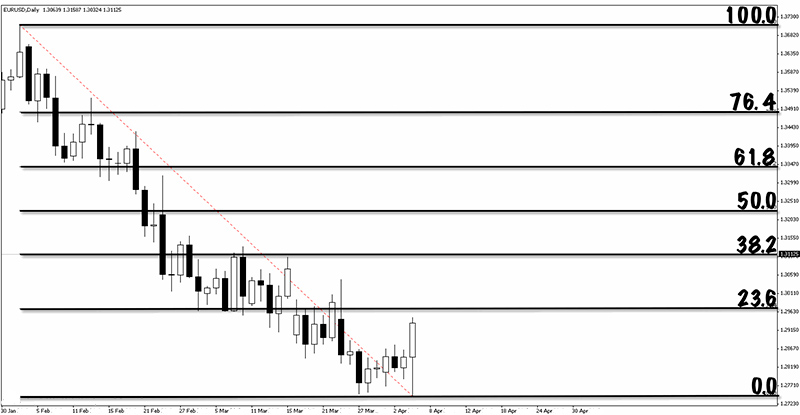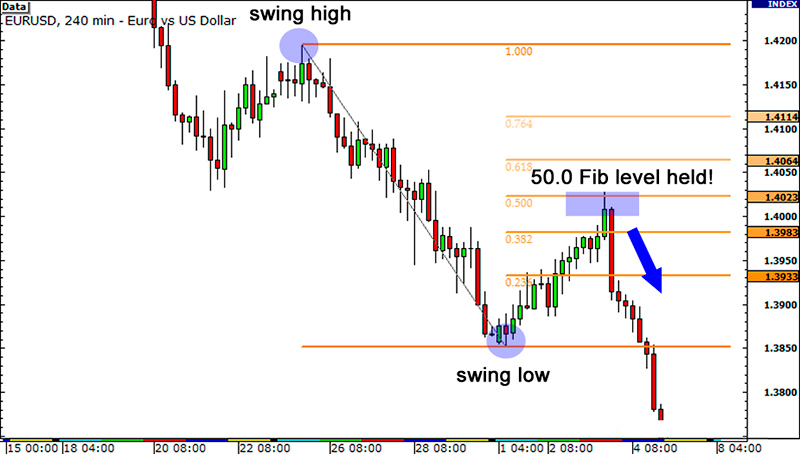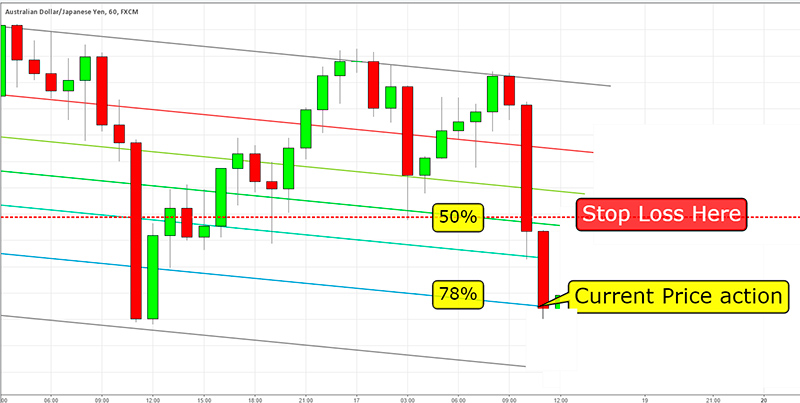How to use Fibonacci in forex Trading?

Forex trading requires traders to acquire in-depth knowledge and understanding of different forex terminologies and strategies. Fibonacci retracement is one of the most popular and widely used forex trading concepts that essentially help traders in identifying the areas for entering as well as exiting the markets. It also helps them in placing stop loss orders as well as taking away profits depending upon the market conditions. However, the Fibonacci retracement levels basically help traders in identifying and trading off support/resistance levels. Here, discover more about Fibonacci levels and also find out how to use them effectively for successful intraday trading.
What is Fibonacci Retracement Levels?

In simple terms, the Fibonacci retracement levels are used for identifying key support as well as resistance levels. It is primarily calculated when the market has either moved down or up significantly and may flatten out at any specific level. Forex traders usually keep a track of the major Fibonacci levels of 38.2, 50 and 61.8 percent by creating horizontal lines in a forex chart at these very levels. This further helps them in identifying the areas that the forex marketplace could retrace before adopting the trend that was formed owing to the initial huge movement in price. Thus, the Fibonacci level is considered to be of great importance, especially when the market reaches or approaches a massive price resistance or support level.
It’s also important to note that the 50 percent retracement level isn’t included in the Fibonacci sequence. However, it is used with respect to market retracement trends and patterns. Forex investors combine Fibonacci levels with their trading strategies to take appropriate investment decisions. As a result, they purchase close to the 38.2 percent retracement levels along with a stop-loss order, which is placed below the 50 percent level. On the other hand, they buy when the price is around the 50 percent level and the stop loss order is beneath the 61.8 percent level. Similarly, traders use the Fibonacci levels and take profits at the time of entering a selling position closer to the top of a large price move. Also, traders use the higher levels of 161.8 percent and 261.8 percent for identifying any prospective support as well as resistance levels when the market ends up retracing near any of the Fibonacci retracement levels and thereafter resumes its previous move.
Fibonacci Retracement Line

A Fibonacci retracement line is basically a predictive technical indicator, which is utilized by analysts for forecasting the exchange rate levels that may be applicable in future. The basic theory behind this level is that post an exchange rate spike, irrespective of the direction it takes, the exchange rate would return or retrace to the previous levels before returning to its original direction. Traders, both novice and professional can conveniently use the Fibonacci levels to take well calculated investment decisions. However, it is important that they cross-check and confirm with other sources before arriving at any conclusion.
Tips for Using Fibonacci Retracement for Predicting Future Exchange Rates
Traders must place the Fibonacci Retracement lines on the pricing chart and extend these lines beyond the existing spot exchange rate for locating each and every potential price retracement levels. They can further use this feedback for adjusting their trading strategies accordingly. The Fibonacci ratios also showcase the potential resistance and support levels, as and when the exchange rate moves upwards. In case the rate of exchange is beneath the retracement level and price trend is moving upwards, traders can use the next level as the future resistance level for the currency pair. On the other hand, during a downward price trend, traders must use the opposite strategy. During a downward trend, every Fibonacci level spots a potential level of support where the forex traders start buying the pair, resulting in a reverse of the downward trend.
Traders must also understand that Fibonacci ratios as well as currency pair retracement also play a vital role in intraday trading. In fact, Fibonacci sequence always impacts the prices of currency directly. Hence, if a large number of traders are of the opinion that a price retracement may occur close to a Fibonacci ratio level and further take an action on the basis of the same, then the pending forex orders may affect the market pricing to a large extent.
Apart from this, traders can also use the 1.618 extension in different ways. They can either utilize the extended levels as the area for placing their targets. It must be noted that a good number of traders face difficulty in identifying the places where they need to take away profits and hence end up taking less profits and witnessing huge stop losses. Thus, they need to understand these extended levels or numbers in order to predict the future price movements and trends.
In addition to this, traders can also use the extension levels for identifying the pricing areas where the prices may exhaust after they’ve naturally moved to the 1.618 Fibonacci figure. This proves helpful after a trader has witnessed a price trend and is searching for different ways in which he/she could make a move. As a result, the trader may choose to wait and let the price retrace the 1.618 extended levels. This may also require him/her to search for forex signals that further indicate that the pricing will continue to move in the direction of the existing trend on a bigger timeframe.
How to Set Stop Loss Orders on the basis of Fibonacci?

Traders, across the globe, use the Fibonacci retracement for placing stop loss orders and limits. In fact, the Fibonacci levels act as their guidelines for placing such orders. For instance, when the price of a given asset is moving upwards and the traders continue to hold long, they can either place their stop loss order right beneath the recent swing lower rate. This happens because this rate acts as a support level sometimes and the dropping price could recover before falling through a previously created level of support. On the other hand, when it comes to trading during a downtrend, traders can go short and create a stop loss order right above the swing higher rate since that could imply a potential level of resistance.
To sum up, the Fibonacci retracement levels are widely used by traders for identifying the support/resistance levels of multiple trading instruments including stocks, forex and commodities markets among others. The main idea behind the Fibonacci retracement concepts is that the market tends to retrace or react by predictable moves that take place as a result of a major happening, development or market incident. Traders also use the main Fibonacci ratios as well as other parallels and analysis for taking accurate stop loss order decisions.